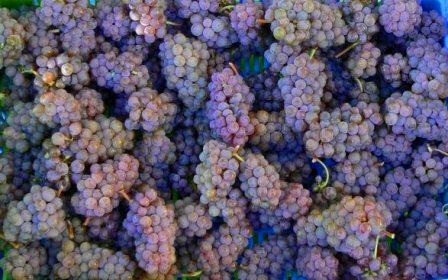
By Nick Adams, Master of Wine
What are International Varietals?
It is estimated that there are potentially up to 10,000 different grape varieties in the world which technically can make wine. Of these the Grape & Wine Research Development Corporation records a database of 1,271 being actively used in creating and blending different styles of wine in the world at present.
Of these there are probably 10 which might be described as the most “noble”, well known (by trade and consumer alike) and widely planted. These are often referred to collectively as International Varietals – not least because as the name implies, and their reputations which follow, they are planted around the world. This includes famous names such as:
- Cabernet Sauvignon
- Chardonnay
- Chenin Blanc
- Grenache (aka Garnacha)
- Merlot
- Pinot Grigio (aka Pinot Gris)
- Pinot Noir
- Riesling
- Sauvignon Blanc
- Syrah (aka Shiraz)
Interestingly though if you look at the Top 10 by the hectares (or acreage) planted then the list is slightly different!
- Cabernet Sauvignon
- Merlot
- Tempranillo
- Airén
- Chardonnay
- Syrah
- Grenache
- Sauvignon Blanc
- Pinot Noir
- Trebbiano (aka Ugni Blanc)
In this list Tempranillo and Airén (a white grape used mainly for bulk wine and blends) are almost exclusively planted in large areas in Spain, so they are very specific and are not “travellers” so to speak – although areas in California, South America and Australia are starting to trial Tempranillo.
Likewise, Trebbiano is an extensively planted white grape specific to Italy, although it makes an important appearance in the southwest of France (Gascogne) and is one of the main grapes behind Cognac and Armagnac.

So, what are the main and most successful indigenous grapes and which ones could be the world stars of tomorrow? We will finish with some fine examples of these from the Wine Trust range. The starting point must be Italy and Portugal.
Italy and Portugal
These two countries – apart from certain parts possibly of Eastern Europe – are the champions of their indigenous varieties. Of course, you will still find international grapes planted (Sicily in Italy being an example) but the bedrock of most of their wines is working with local varieties. This is taken to such extremes in parts of Italy that these varieties are almost exclusive to just that province let alone the rest of Italy.
For example, a white winemaker in Gavi Piedmont will work with and champion Cortese, whilst having limited knowledge in his or her counterpart in Soave working with Garganega, whilst another producer in Campania will be focusing on Fiano. Multiple this on the red side and across Italy and you end up with an Aladdin’s Cave of wine flavours and styles which are not only qualitatively strong and interesting but individual and authentic. And then try looking for them on the world stage and who else might be working with these varieties and the short list is … well short. They are the complete antipathy of the term “international”.
The same applies to Portugal by region and just to take one high quality example – all ports are made from a complex blend of indigenous Portuguese varieties, led by Touriga Nacional with including Tinta Roriz and Tinta Francesca. A white winemaker in Dão with work with Encruzado, in Bairrada, Bical in Alentejo Arinto and so on.
And some of these grapes are behind wines which can produce world class wines, highlights include:
Italy
- Nebbiolo – Barolo & Barbaresco
- Sangiovese – Chianti (Classico/Rufina) & Brunello di Montalcino
- Cortese – Valpolicella (Amarone)
- Aglianico – Taurasi
Portugal
- Touriga Nacional – important component in Vintage & Reserve aged Tawny Ports, also full-bodied dry table red wines in the Douro
- Alvarinho – classical Vinho Verde and Monção & Melgaço
- Arinto – Alentejo
- Bical- Barriada
I would also be tempted here to highlight red Rioja (and Ribera del Duero) and its main grape component Tempranillo. Rioja has remained a steadfast UK favourite, but the Tempranillo grape is much less well known or recognised, and maybe again because it doesn’t travel that well. It has become another example of a more “site specific” variety like Nebbiolo with Barolo and Barbaresco.
These are all already established names and recognised wines – although some drinkers may not be always aware of the grapes behind them. But does that matter when maybe the provenance of the wine is more important to the drinker? So, what about the rising stars in other countries and future international favourites?
Spain
Maybe one of the most pertinent examples in the last 20 years has been the rise in, and following for, Albariño particularly from Rías Baixas in Galicia northwest Spain. The same grape over the border in the Minho Portugal is called Alvarinho but to date has not made quite the same connection with the drinker, although equally fine. With its fine, crisp citric and stone fruit qualities, unoaked and refreshing style, it is clear to see why it has become so popular.
France
Another example of a grape “on the rise” must be the Rhône white variety Viognier – which is now grown successfully across the world and is fully in transition to becoming an international variety. With body and texture akin to a good Chardonnay and precise stone fruit flavours this can be quite a hedonistic burst in the glass when on form.
By contrast the other great white Rhône white grapes – Marsanne and Roussanne are making slower progress in recognition and plantings around the world although top examples comfortably match Viognier for quality. There are pioneers though most notably Tahbilk in Victoria, Australia whose bottled aged museum release Marsanne’s sit under the radar as one of the world’s finer white wines – unoaked with amazing, dried stone fruit qualities and lighter alcohol and fine texture.
Another highly popular wine is Picpoul de Pinet from the Languedoc in southern France, made with the Picpoul or “Piquepoul” grape. This is now a firm UK favourite whose following has grown via its familiarity with the many millions of tourists who visit the region, its distinctive branded bottle shape, and the fact it is a very good and consistent wine with crisp, citric fruits, medium body, and easy drinking style. This wine is now a permanent feature on most restaurant wine lists – wind back just 25 years and few would know of or have featured it.
South America
Paradoxically, there has also been a resurrection of older, traditional European varieties in New World countries – probably the most successful example being Argentina’s success with the old Bordeaux variety Malbec in the Mendoza region. So much so that other countries are now planting Malbec on a large scale and some producers in Bordeaux are replanting it. Another example, if not quite so dramatic, has been Chile’s faith in and success with Carmenère. Again, with an old Bordeaux variety (where again it is started to be replanted). I could quite easily see Malbec becoming truly international within a few decades.
Greece
Another country which teems with indigenous varieties is Greece. Here both long established black and white varieties are now starting to show their paces and building reputations. Highlights include the black grapes Xinomavro and Agiorgitiko and the whites Malagousia and Assyrtiko.
Xinomavro is often referred to as “Greece’s Barolo”, particularly from the Naoussa region in the north where its fine red fruits, firm structure, and floral bouquet touches on the character of it more famous Italian counterpart. The Agiorgitiko is more rounded and plusher with ripe plum flavours especially from the Nemea region.
Assyrtiko has been a long established fine white grape and wine – especially from the island of Santorini where in its dry form it is very crisp, citric, intensely mineral and savoury. The Vin Santó sweet version (made from sun dried grapes) is one of the world’s greatest dessert wines with its rich toffee and raisin notes balanced by remarkable freshness. Finally, Malagousia – a grape which almost died out – which is quite exotic on style, dry and spicy with ripe stone fruits and a savoury cut. It works particularly well in the Epanomi region. I suppose the yet unanswered question is, are these grapes and wines site specific or could they too by successful when planted around the world given their intrinsic qualities and potential appeal to growers and drinkers alike?
Old Favourites
And then there are twists to old favourites. We are very familiar with Sauvignon Blanc, but maybe less so with its cousin Sauvignon Gris. With its origin too in and around the Bordeaux region, this grape has some interesting richer textures and a spicy element whilst retaining Sauvignon Blanc’s freshness. It works well too when incorporated into barrel fermentation.


Try this variety of wines from Wine Trust
Thankfully the diversity of international and inidigenous grape varieties and the increasing interest in growers and producers wanting to explore and create new styles and flavours is great news for the wine drinker as the vinous canvass seems set to flourish in the foreseeable future. Of course, international varieties will always remain strong and sort after but having this mix of offerings couldn’t be better for the wine lover. To finish, I have suggested a nice selection of indigenous offerings from the Wine Trust portfolio.
A fine cross section from 7 different countries – Portugal, France, Italy, Chile, Spain, Uruguay, and Greece. You may find it interesting to try the Spanish and Uruguay Albariño together to see the difference between the countries with the same grape!

